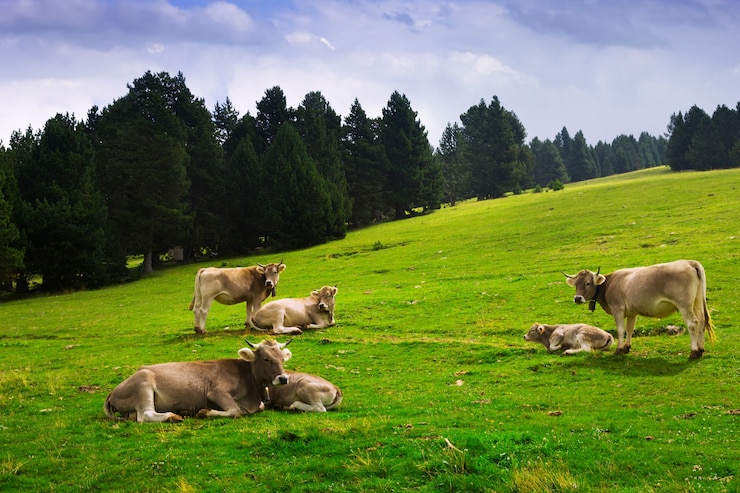Cattle farming plays a vital role in South Africa’s agricultural sector, providing meat, milk, and other by-products. However, cattle are susceptible to various infections and diseases that can significantly impact herd health and productivity. In this article, we will highlight some common infections and diseases that cattle farmers in South Africa should be aware of, along with preventive measures and management strategies.
- Foot and Mouth Disease (FMD): Foot and Mouth Disease is a highly contagious viral disease that affects cloven-hoofed animals, including cattle. It can cause fever, blisters, lameness, and decreased milk production. Strict biosecurity measures, surveillance, and vaccination programs are essential for preventing and controlling FMD outbreaks.
- Bovine Respiratory Disease (BRD): Bovine Respiratory Disease, also known as shipping fever, is a complex respiratory condition caused by multiple pathogens, including viruses and bacteria. It can lead to respiratory distress, reduced weight gain, and increased mortality. Maintaining good ventilation, minimizing stress, and implementing vaccination programs are key preventive measures.
- Bovine Tuberculosis (BTB): Bovine Tuberculosis is a chronic bacterial infection caused by Mycobacterium bovis. It primarily affects the respiratory system but can also spread to other organs. Infected cattle may exhibit coughing, weight loss, and weakness. Regular testing, movement restrictions, and culling of infected animals are critical for BTB control.
- Brucellosis: Brucellosis is a bacterial infection caused by Brucella species, particularly Brucella abortus. It can result in reproductive disorders, including abortion, retained placenta, and reduced fertility. Strict biosecurity measures, regular testing, and culling of infected animals are vital in preventing the spread of brucellosis.
- Tick-Borne Diseases: Tick-borne diseases, such as Anaplasmosis and Babesiosis, are prevalent in South Africa and can affect cattle. These diseases are transmitted by ticks and can lead to anemia, reduced productivity, and even death. Implementing tick control measures, regular acaricide treatment, and maintaining tick-free grazing areas are important preventive strategies.
- Lumpy Skin Disease (LSD): Lumpy Skin Disease is a viral infection caused by the Capripoxvirus. It results in the formation of nodules on the skin, fever, and reduced milk production. Strict biosecurity measures, surveillance, and vaccination programs are crucial for preventing and managing LSD outbreaks.
- Mastitis: Mastitis is an inflammatory condition of the udder caused by bacterial infection. It leads to reduced milk production, changes in milk quality, and udder swelling. Proper milking hygiene, regular udder health checks, and prompt treatment of infected cows are vital in preventing and managing mastitis.
- Internal and External Parasites: Cattle are susceptible to internal parasites like gastrointestinal worms and external parasites like ticks and lice. These parasites can cause weight loss, anemia, skin irritation, and reduced productivity. Implementing effective parasite control programs, regular deworming, and providing clean bedding can help minimize parasite infestations.
Cattle farmers in South Africa should prioritize herd health by implementing proper biosecurity measures, regular veterinary check-ups, and preventive strategies. Maintaining a clean and hygienic farming environment, practicing strict quarantine protocols for new animals, and implementing vaccination programs are crucial for preventing and managing infections and diseases in cattle. Additionally, early detection, prompt treatment, and collaboration with veterinary professionals can help minimize the impact of diseases on herd productivity. By adopting proactive measures, cattle farmers can ensure the sustainability and profitability of their farming operations.
Image by bearfotos on Freepik







